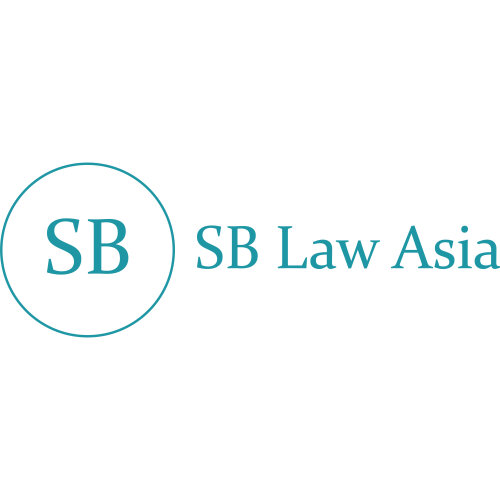The Thai government is considering significant legislative reforms for 2025, with the goal of improving employee welfare and creating a more equitable labor market. Firstly, let’s take a brief look at Thailand’s current labor laws, then we will go into the potential future changes.
What are the Current Labor Laws in Thailand?
Thailand's labor laws are a carefully designed collection of guidelines, with the Labor Protection Act (LPA) being the core instrument. In Thai law, this foundational law lays down the basic rights and responsibilities binding employers and workers. Still, the subtleties go beyond this one act; industry-specific rules and nuances add further elements to the already challenging design.
For more detail, you can check out our other article which goes into more detail on the principles of Thai labor law.
Below are the key upcoming proposals:
Employee Security Deposits for the Welfare Fund
A transformative update to Thailand’s labor laws in 2025 will introduce mandatory contributions to an employee welfare fund, marking a significant shift in employee financial security. This new provision is part of a broader legislative overhaul aimed at ensuring employees have a financial safety net during times of need, such as unemployment, medical emergencies, or even death.
Key Details of the New Welfare Fund Legislation
Contribution Rate: Employers will be required to contribute a percentage of each employee’s monthly salary to the welfare fund. The exact contribution rate will be tiered based on the employee’s salary, ensuring proportional savings for employees across different income levels.
Eligibility: Both Thai nationals and foreign workers employed in Thailand will be eligible for benefits under this scheme. The welfare fund aims to provide universal coverage for workers across various sectors.
Usage Cases of Thailand’s Welfare Fund
The fund is designed to serve multiple purposes, including:
Medical Assistance: Coverage for medical bills, including treatment for chronic illnesses and emergency health care.
Job Training: Financial support for training programs aimed at improving employees' skills and career prospects.
Emergency Aid: Financial assistance for employees facing unexpected hardships, such as family emergencies or loss of income.
While this initiative has received support from labor unions as a crucial step toward ensuring employee welfare, business groups have raised concerns about the financial burden it could impose. These concerns include the challenge of managing the additional administrative tasks and costs associated with the new contributions.
Illustration of Thailand’s current old-age income support system
To address these issues, the Thai government is engaging in consultations with business associations to refine the policy, balancing employee protection with economic feasibility for employers. As the new regulations roll out, companies will need to stay informed and prepared to comply with these upcoming changes.
Mandatory Mental Health Support
Acknowledging the growing importance of mental health in the workplace, the Thai government is exploring regulations requiring employers to provide mental health resources.
Thailand has a mental health policy and plan and its mental health legislation is likely to be enforced soon. Approximately 3.5% percent of health care expenditure is directed towards mental health services according to a World Health Organization report.
According to The Nation, a Thai media outlet, recent findings from the Bangkok Mental Health Hospital (BMHH) showed that approximately 10 million Thai people are suffering from mental health issues, whereas only around 2 million have sought out any form of treatment.
Based on the experience of other countries who have gone through similar changes, proposed measures could include:
- Establishing employee assistance programs (EAPs).
- Providing access to counseling services.
- Offering mental health awareness training for managers.
There are many more initiatives that could be considered. Such moves would benefit employees by reducing stress and improving overall workplace morale.
Thai Labor Law Compliance Tips for Employers
Staying compliant with labor law updates can be challenging, but proactive steps can help businesses adapt effectively. Here are practical tips:
Regularly Review Employment Contracts
Ensure that all employment agreements reflect the latest legal requirements, including updates on wages, benefits, and working hours. Use clear language to avoid ambiguity.
Update HR Policies
Review and revise internal policies to align with new regulations. For example, update maternity leave policies to include the extended leave period and outline remote work guidelines.
Invest in Employee Training
Educate managers and HR teams about labor law changes to ensure consistent compliance. Conduct workshops or online training sessions focused on new regulations and best practices.
Leverage Technology
Use HR software to automate compliance tracking, payroll adjustments, and reporting. Digital tools can help minimize errors and save time.
Engage Legal Counsel
Consult labor law experts to navigate complex regulations and mitigate risks. Legal advisors can provide tailored guidance based on your business’s specific needs.
The Impact of Potential Changes on Employees and Employers
Benefits for Employees
The recent and proposed changes prioritize worker welfare, offering several advantages:
Increased Financial Security: Higher minimum wages and welfare fund contributions provide a safety net for employees.
Improved Work-Life Balance: Reduced working hours and enhanced remote work options support better work-life integration.
Access to Support Services: Mandatory mental health resources address employee well-being holistically.
Challenges for Employers
While these reforms benefit employees, they may pose challenges for businesses, including:
Increased Costs: Higher wages, welfare fund contributions, and additional staffing needs could strain budgets.
Operational Adjustments: Implementing new policies, such as reduced working hours, may require significant changes to workflows.
Regulatory Compliance: Keeping up to date with frequent legal changes demands ongoing attention and resources.
Potential Impact on Small and Medium-Sized Enterprises (SMEs)
While the proposed labor law amendments may give substantial advantages to workers, small and medium-sized firms (SMEs) might encounter specific obstacles. With lower resources relative to more substantial corporations, SMEs may struggle to bear the increased financial obligations imposed by these changes.
Key Considerations for SMEs
Financial Strain: Increased payments to the Welfare Fund and obligatory mental health assistance programs might affect cash flow.
Compliance Costs: SMEs may find it challenging to keep up with the continual regulatory changes, necessitating more expenditure in legal consultations and HR software.
Workplace Flexibility: Implementing remote work or flexible hours, as advocated, could involve considerable adjustments to corporate processes, particularly for smaller teams.
Strategies for SMEs
Explore government subsidies or tax cuts available for small companies to offset higher expenses.
Consider developing collaborations with other SMEs to exchange resources, such as mental health programs or training efforts.
Regional Variations and Local Considerations
The implementation of labor law reforms may vary across regions, particularly in areas with significant foreign labor. Provinces with a high concentration of migrant workers may need to implement additional measures for compliance.
Regional Challenges
Geographic Accessibility: Rural areas with limited access to mental health services may struggle to meet new requirements for employee well-being.
Cultural Differences: Tailoring mental health programs to cater to diverse workforces, including migrant workers, may require culturally sensitive approaches.
Localized Solutions
Local government support programs can help bridge the gap for businesses in less accessible regions.
Employers can collaborate with local health professionals to ensure mental health initiatives meet community needs.
Long-Term Outlook and Moving Towards a More Inclusive Workforce
As labor laws evolve, the Thai workforce is likely to become more diverse and inclusive. The changes proposed for 2025, such as the introduction of mental health support and welfare funds, reflect a broader global trend towards inclusivity in the workplace.
Key Trends to Watch
Diversity and Inclusion: Legal reforms may encourage businesses to adopt more inclusive hiring practices, focusing on underrepresented groups.
Workforce Aging: As Thailand’s population ages, labor laws may continue to evolve to support older workers, including provisions for retirement benefits and accessible workplace accommodations.
Global Standards: With increasing globalization, Thai labor laws may align more closely with international standards, influencing multinational companies operating in Thailand.
Preparing for the Future
Businesses should consider establishing inclusive hiring policies and workplace accessibility measures in anticipation of a more diverse workforce.
Continuing education and awareness programs about inclusivity and diversity will be key to creating a supportive and sustainable workforce.
Keeping Up to Speed With Thailand Labor Law Updates
Thailand’s labor laws are evolving to meet the demands of a modern workforce, emphasizing employee welfare and workplace equity. The updates in 2024 reflect the government’s commitment to enhancing protections, while the proposed changes for 2025 signal a forward-thinking approach to labor reform. Employers must remain vigilant, proactive, and adaptable to navigate these changes effectively.
By prioritizing compliance and fostering a supportive work environment, businesses can not only meet legal requirements but also enhance employee satisfaction and retention. As these developments unfold, keeping informed by following Lawzana legal updates and being prepared by connecting with labor law legal specialists in Thailand will be key to thriving in Thailand’s dynamic labor market.



